Zoom
Trash

Sicilian Mafia. According to the classic definition, the Mafia is a criminal organization originating in Sicily.[1] However, the term "mafia" has become a generic term for any organized criminal network with similar structure, methods, and interests.
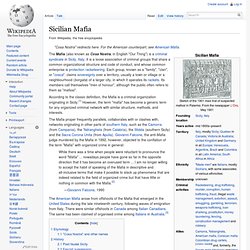
The Mafia proper frequently parallels, collaborates with or clashes with, networks originating in other parts of southern Italy, such as the Camorra (from Campania), the 'Ndrangheta (from Calabria), the Stidda (southern Sicily) and the Sacra Corona Unita (from Apulia). Giovanni Falcone, the anti-Mafia judge murdered by the Mafia in 1992, however, objected to the conflation of the term "Mafia" with organized crime in general: While there was a time when people were reluctant to pronounce the word "Mafia" ... nowadays people have gone so far in the opposite direction that it has become an overused term ...
Etymology[edit] Possible origins from Arabic include: "Cosa Nostra" and other names[edit] History[edit] Post-feudal Sicily[edit] 黑手党. 黑手黨(Mafia或是稱為Cosa Nostra)是指一種祕密結社犯罪組織,最早起源於十九世紀中葉的義大利西西里島。
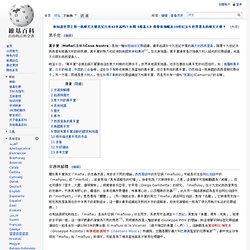
Italian unification. Italian unification (Italian: Risorgimento [risordʒiˈmento], meaning the Resurgence) also known as Italian Revolution[1] was the political and social movement that agglomerated different states of the Italian peninsula into the single state of the Kingdom of Italy in the 19th century.
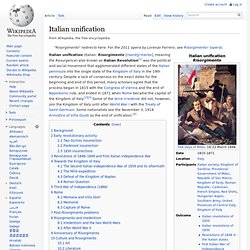
Despite a lack of consensus on the exact dates for the beginning and end of this period, many scholars agree that the process began in 1815 with the Congress of Vienna and the end of Napoleonic rule, and ended in 1871 when Rome became the capital of the Kingdom of Italy.[2][3] Some of the terre irredente did not, however, join the Kingdom of Italy until after World War I with the Treaty of Saint-Germain. Some nationalists see the November 3, 1918 Armistice of Villa Giusti as the end of unification.[4] Background[edit] Ostrogothic Kingdom of Italy Dante Alighieri Niccolò Machiavelli. 意大利統一. 意大利统一,即复兴运动(意大利文:Risorgimento,意为复兴,故中文文献将该统一过程称之为复兴运动)是19世紀至20世紀初期間,將意大利半島內各個國家統一為意大利的政治及社會過程。
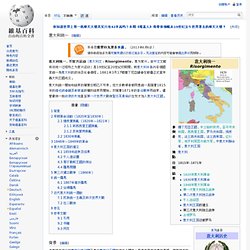
1861年3月17號薩丁尼亞議會在都靈正式宣布義大利王國成立。 Vito Cascioferro. Vito Cascioferro or Vito Cascio Ferro (January 22, 1862 – c. 1942, summer 1943 or 1945), also known as Don Vito, was a prominent member of the Sicilian Mafia.
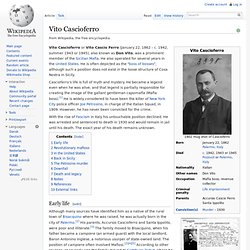
He also operated for several years in the United States. He is often depicted as the "boss of bosses", although such a position does not exist in the loose structure of Cosa Nostra in Sicily. Cascioferro's life is full of myth and mystery. He became a legend even when he was alive, and that legend is partially responsible for creating the image of the gallant gentleman capomafia (Mafia boss).[1] He is widely considered to have been the killer of New York City police officer Joe Petrosino, in charge of the Italian Squad, in 1909. However, he has never been convicted for the crime. Cesare Mori. The 'Iron Prefect' Cesare Mori Cesare Mori (Pavia, December 22, 1871 – Udine, July 6, 1942) was a prefect (prefetto) before and during the Fascist period in Italy.
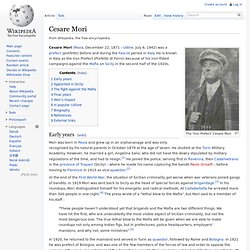
He is known in Italy as the Iron Prefect (Prefetto di Ferro) because of his iron-fisted campaigns against the Mafia on Sicily in the second half of the 1920s. Early years[edit] Benito Mussolini. Benito Amilcare Andrea Mussolini (Italian pronunciation: [beˈnito musoˈlini]; 29 July 1883 – 28 April 1945) was an Italian politician, journalist, and leader of the National Fascist Party, ruling the country as Prime Minister from 1922 until his ousting in 1943.
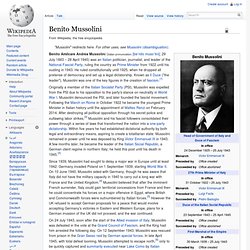
He ruled constitutionally until 1925, when he dropped all pretense of democracy and set up a legal dictatorship. Known as Il Duce ("the leader"), Mussolini was one of the key figures in the creation of fascism.[1] Originally a member of the Italian Socialist Party (PSI), Mussolini was expelled from the PSI due to his opposition to the party's stance on neutrality in World War I. Mussolini denounced the PSI, and later founded the fascist movement. Following the March on Rome in October 1922 he became the youngest Prime Minister in Italian history until the appointment of Matteo Renzi on February 2014.
Since 1939, Mussolini had sought to delay a major war in Europe until at least 1942. Early life Mussolini's father, Alessandro. 贝尼托·墨索里尼. 贝尼托·墨索里尼(意大利语:Benito Mussolini,全名:Benito Amilcare Andrea Mussolini,1883年7月29日-1945年4月28日)是一位意大利政治家、记者、思想家,曾擔任過意大利王国第40任总理的職務,同時也是法西斯主义的创始人。
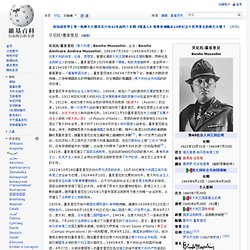
墨索里尼於1925年獲得「領袖」和政府首脑称号,並自同年一直至1943年7月25日期間於義大利实施独裁统治,1938年3月30日亦獲得了意大利最高軍銜—「最高帝国元帅」,墨索里尼後於1943年7月失勢下台,被義大利新政府拘捕,之後被德國派出的特種部隊救出,改任德國的傀儡國—意大利社会共和国的政府总理。 1922年10月28日墨索里尼发动向罗马进军的政变,10月30日被意大利国王埃马努埃莱三世任命为总理。 1924年6月10日,墨索里尼的主要政治对手,意大利社会主义政治家吉亚科莫·马泰奥蒂遭到暗杀。 出于对内战和社会主义者反君主制特点的担忧,国家法西斯党获得了国王的支持,并取得了同年大选的壓倒性胜利,取得三分之二多數的議席。 继而墨索里尼在1925年1月宣布国家法西斯党为意大利唯一合法政党,从而建立了法西斯主义独裁统治。 1935年,墨索里尼开始与德国总理阿道夫·希特勒接触,義德於1939年5月22日签订钢铁条约。 Calogero Vizzini. Calogero Don Calò Vizzini (July 24, 1877 – July 10, 1954) was a historical Mafia boss of Villalba in the Province of Caltanissetta, Sicily.
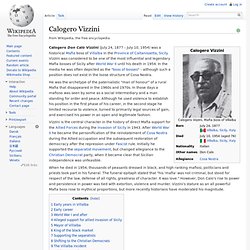
Christian Democracy (Italy) 意大利天主教民主党. 意大利天主教民主党(意大利语:Democrazia Cristiana,DC),前意大利執政党。

1919年6月14日成立,原名意大利人民党,是一个天主教民主政党[3][4]。 人民党在1926年被贝尼托·墨索里尼法西斯政权取缔。 Luciano Leggio. Gaetano Badalamenti. Sicilian Mafia Commission. The Sicilian Mafia Commission, known as Commissione or Cupola, is a body of leading Mafia members to decide on important questions concerning the actions of, and settling disputes within the Sicilian Mafia or Cosa Nostra. It is composed of representatives of a mandamento (a district of three geographically contiguous Mafia families) that are called capo mandamento or rappresentante. Salvatore Riina. Salvatore "Totò" Riina (born 16 November 1930) is a member of the Sicilian Mafia who became the most powerful member of the criminal organization in the early 1980s. Fellow mobsters nicknamed him The Beast (La Belva) due to his violent nature, or sometimes The Short One (U curtu) due to his diminutive stature. During his lifelong career in crime he is believed to have personally killed around forty people and to have ordered the deaths of several hundreds more.
事件. Grand Hotel des Palmes Mafia meeting 1957. Over four days, between October 12–16, 1957, the American gangster Joseph Bonanno allegedly attended a series of meetings between some high-level Sicilian and American mafiosi in the Grand Hotel des Palmes (Albergo delle Palme) in Palermo, Sicily – the most splendid in town at the time. The so-called 1957 Palermo Mafia summit has become a legendary landmark in the international illegal heroin trade in popular Mafia non-fiction. The question is if it ever took place. Ciaculli massacre. The Ciaculli massacre on 30 June 1963 was caused by a car bomb that exploded in Ciaculli, an outlying suburb of Palermo, killing seven police and military officers sent to defuse it after an anonymous phone call. The bomb was intended for Salvatore "Ciaschiteddu" Greco, head of the Sicilian Mafia Commission and the boss of the Ciaculli Mafia family. Mafia boss Pietro Torretta was considered to be the man behind the bomb attack. Second Mafia War.
The Second Mafia War was a conflict within the Sicilian Mafia, mostly taking place in the early 1980s. As with any criminal organization, the history of the Sicilian Mafia is replete with conflicts and power struggles, and the violence that results from them, but these are generally localised and short term. However, the Second Mafia War, which is sometimes referred to as The Great Mafia War or the Mattanza (Italian for, The Slaughter), involved the entire Mafia and radically altered the power balance within the organization.
Even more so than the first one, the Second Mafia War involved a staggering amount of violence, with over a thousand homicides. 掃黑. Giovanni Falcone. Giovanni Falcone (on the left) and Paolo Borsellino. The picture of both assassinated judges became an iconic symbol of the struggle against Cosa Nostra. It is often used on posters and articles commemorating the fight against the Mafia. Giovanni Falcone (18 May 1939 – 23 May 1992) was an Italian prosecuting magistrate. 乔瓦尼·法尔科内. 乔瓦尼·法尔科内(Giovanni Falcone,1939年5月18日-1992年5月23日)是意大利一位著名的法官,前司法部刑法司长。 Paolo Borsellino. Paolo Borsellino Paolo Borsellino (January 19, 1940 – July 19, 1992) was an Italian anti-Mafia magistrate.
He was killed by a Mafia car bomb in Palermo, 57 days after his friend and fellow Antimafia magistrate Giovanni Falcone was assassinated. 保罗·博尔塞利诺. 保罗·博尔塞利诺(于1940年1月19日出生在巴勒莫,1992年7月19日在同一个城市罹难)是一名意大利反黑法官,1992年7月19日他被黑手党的汽车炸弹谋害于巴勒莫。 此前不足两个月,他的朋友——另一名反黑法官乔瓦尼·法尔科内被暗杀。 Tommaso Buscetta. Tommaso Buscetta (Italian pronunciation: [tomˈmazo buʃˈʃetta]; 13 July 1928 – 2 April 2000[1]) was a Sicilian mafioso. Pentito. Role and benefits[edit] In exchange for the information they deliver, pentiti receive shorter sentences for their crimes, in some cases even freedom.
In the Italian judicial system, pentiti can obtain personal protection, a new name, and some money to start a new life in another place, possibly abroad. This practice is common in other countries as well. Maxi Trial. Italy. 意大利. 意大利共和国(意大利语:Repubblica Italiana[4],通稱為意大利,台湾译之为义大利)是一個歐洲國家,主要由位於南歐的靴型亞平寧半岛及两个位于地中海中的岛嶼西西里岛與萨丁岛所组成,國際代碼為IT。 意大利北方的阿尔卑斯山地区与法国、瑞士、奥地利以及斯洛文尼亚接壤,其领土包围着两个袖珍国——圣马力诺與梵蒂冈,而在瑞士擁有座落於盧加諾湖湖畔的意大利坎波內這個境外領土。 全国行政划分20个大区(其中5个為自治区)、110个省與8,100个城市。 首都為罗马,意大利王国在1870年將首都設置在此,而杜林(1861年-1865年)及佛羅倫斯(1865年-1870年)也曾是意大利王國的首都。 根据2009年统计,意大利人口大约为6,020萬,領土面積約為301,338平方公里,人口密度约每平方公里200人,屬於溫帶氣候。 意大利是歐洲人口第5多的國家,也是世界上人口第23多的國家。 現今的意大利區域是以前歐洲民族及文化的搖籃,曾孕育出羅馬文化及伊特拉斯坎文明,而意大利的首都羅馬,幾個世紀以來都是西方世界的政治中心,也曾經是羅馬帝國的首都。 意大利也在政治、文化、科學、醫療衛生、教育、體育、藝術、時尚、宗教、料理、電影、建築、經濟及音樂等方面具有重要的影響力。 意大利在歐洲及全球的軍事、文化和外交事務扮演重要的角色,首都羅馬則是世界上對於政治及文化具有重要影響力的城市,世界上許多著名的機構,例如國際農業發展基金會(International Fund for Agricultural Development)[19]、全球在地論壇(Glocal Forum)[20]、世界糧食計劃署及聯合國糧食及農業組織的總部都位在羅馬。 國名來源[编辑] 一般認為義大利 Italia 這個名稱是源自於希臘語化的奧斯坎語Víteliú,即擁有幼牛之地的意思[33](比较拉丁语vitulus"牛犊",翁布里亚语vitlo"牛犊")。
Sicily. 西西里岛. Organized crime. 黑社會.